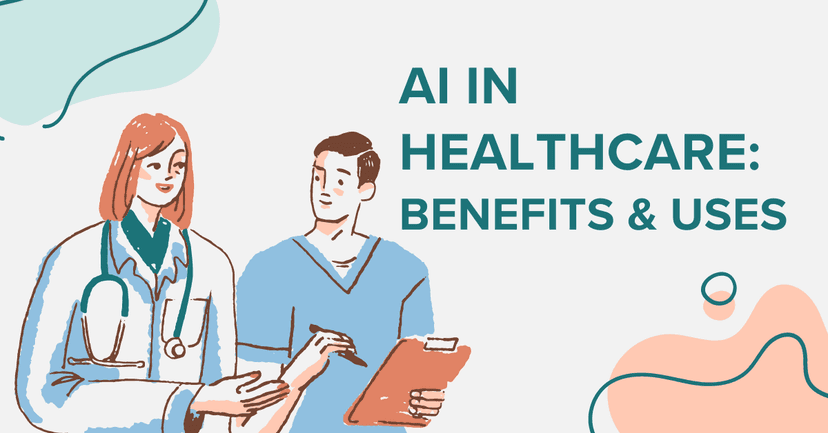What are the benefits of using AI tools for students? Please read on and learn more in today’s post.
The 21st century is an era of unprecedented knowledge explosion. The things we learn today occur at a rapid pace.
And the pressure is more significant among students. That’s why artificial intelligence is heaven-sent for them.
Although the world met AI with skepticism, some were more optimistic. They recognize the growing importance and roles of reactive machines, self-awareness programs, theory of mind systems, and limited learning machines in improving daily lives.
No one can be more bright-eyed than learners. So, what are the benefits of using AI tools for students? Please read on.

1. Promotes Personalized Learning
The traditional learning environment places students on the passive, receiving end.
Teachers and professors talk. Learners listen, jot notes, and do other things to help them improve knowledge acquisition and retention.
In short, students do not control how they want to learn.
Giving students some control over their learning increases engagement and a sense of ownership.
Student-designed learning activities reflect learners’ interests and passions.
The best AI tools encourage students to customize learning pursuits.
They could easily ask AI to translate technical lessons into text even a grade-schooler understands.
Students using generative AI technologies can create learning activities where they learn best.
Such learner-developed programs facilitate better comprehension of theories and principles.
They enjoy learning – an attribute they can carry throughout their life. And that can mean future success.
2. Facilitates Intelligent (and Free) Tutoring
Some learners find specific topics challenging to comprehend.
Tutors can help. Unfortunately, hiring a tutor is costly, with seasoned instructors charging up to $80 an hour.
Tutoring centers can cost less, at around $200 monthly.
Still, shelling out cash should be the least of students' worries (burgeoning student debts notwithstanding).
AI learning tools can help.
Although some AI-powered tutoring programs can cost students a fee, the amount is often smaller than a real tutor.
Moreover, it doesn’t limit how long a student gets tutorial lessons.
The best part about using AI learning programs is students can customize them to suit their needs.
As mentioned, personalized learning can promote better comprehension, increase engagement, and facilitate ownership.
3. Offers a More Accessible Way to Learn
Students can read lecture notes on the bus or flip lesson pages while basking in the sun.
However, these learning tools aren’t as convenient as AI-generated learning content.
Imagine downloading and watching an AI video lesson on your smartphone, with a realistic AI teacher delivering instruction.
Learners could be at the park, in mass public transport, or on holiday. They will never miss a lesson.
Did you know that 21 in 25 teenagers have smartphones and 53 percent of school children have personal mobile devices before age 11?
These learners can access learning materials anywhere, anytime. That’s convenient!
4. Promotes Collaboration

Some students learn better when sharing knowledge and ideas with peers.
Although only four in 25 students prefer a study partner over burning the midnight oil alone, the number is still significant, considering over 18 million go to colleges and universities in the US alone. That’s a little less than three million preferring group study sessions.
AI learning programs can benefit these learners by providing a platform that transcends geopolitical boundaries.
A Shanghai University student can collaborate with a Harvard counterpart, and they will never worry about language barriers because AI has natural language processing to transform one language into another.
AI learning management tools can also make coordination and collaboration with different students easier and more convenient. A student can initiate a classroom project, and everyone can pitch an idea or two.
5. Delivers Prompt and Accurate Responses
Some learners might need a second or third pass to comprehend a lesson.
Unfortunately, teachers cannot glue themselves to the lecture room or virtual learning classroom to answer student questions. Not AI.
AI-driven tools for students never sleep, go to the restroom for a break, or suffer a breakdown. These programs don’t quit, and they have the answers within seconds.
Did you know 89 in 100 students use ChatGPT and other AI platforms to enlighten them about classroom topics?
More than half of learners use machines to write compelling essays.
Why? It is a more efficient way to accomplish things so students can focus on other activities.
AI scours the World Wide Web for the most accurate and credible answers—and it does it quickly.
6. Adapts to the Student’s Learning Style and Progress
Does it matter? Of course!
Every time students use an AI tool to understand and learn a topic, the program also learns more about the learner. That’s machine learning.
AI understands your learning preferences and styles (i.e., visual, reading & writing, auditory, or kinesthetic) and instantly recommends suitable learning activities.
It tracks learner performance and suggests ways to improve.
AI can also present actionable data, giving insights into a student’s learning progress.
AI’s adaptability isn’t surprising. After all, AI engineers and developers want to create a “thinking” program like a normal human brain.
7. Fosters Imagination and Creativity without Expensive Equipment
Did you know that one in two teenagers are online creators? They are also more likely to be students, which says a lot.
Creating compelling content for Facebook, YouTube, TikTok, and other social media channels isn’t easy, especially if you’re committed to finishing school. So, what gives?
Producing viral videos is now easier (and more cost-effective) than ever.
For example, you could use Puppetry’s AI avatar generator or AI-powered video maker to create stunning content in minutes.
Students never have to worry about expensive cameras, audio equipment, or editing software. Everything happens on a single platform.
The best part? Student content creators can use their video creation skills to learn different lessons. They can become creative in their lessons and school projects, leading to better grades.

Final Thoughts
There should still be a balance between using AI tools and traditional teaching to ensure the successful implementation of AI and its use among students.
At the end of the day, AI technologies in education can complement, but they cannot replace or substitute human interactions in the classroom.
Nevertheless, AI tools benefit students.
How about you? How does AI help with your studies?
And if you’re an educator, how does it help you accomplish lesson plans and create teaching aids? Check out this post on the best AI tools for teachers.


![How to Use AI for Coaching in 2024 [+ 6 AI Tools for Coaches]](/_next/image?url=%2Fimages%2Fhow-to-use-ai-for-coaching-I3Mz.png&w=828&q=75)
